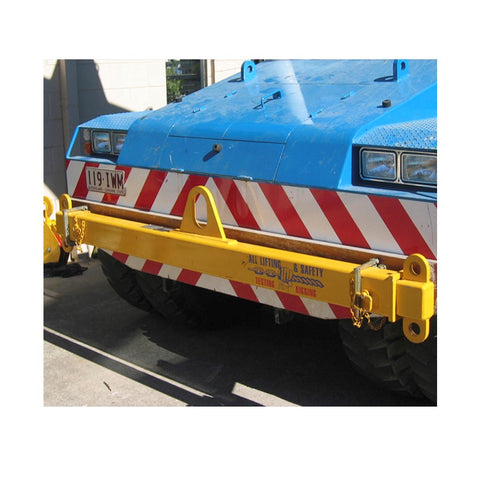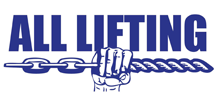
LIFTING BEAMS VS SPREADER BARS: WHAT'S THE DIFFERENCE?
Lifting beams and spreader bars are some of the most common types of lifting devices, however the difference is often misunderstood.
Lifting Beams
Lifting beams have a single centred lifting point on the top side of the beam to connect to a crane, hoist or other lifting mechanism. There will be two or more lifting points on the underside of the beam to attach the load to be lifted. They can also be fabricated with adjustable bottom lifting points, at fixed or variable increments. The addition of adjustable lifting points means the beam can lift a wider range of sized loads. The heavy duty and rigid design of a lifting beam makes them ideal to lift and support flexible loads.
Pros for Lifting Beams:
- They don’t require much headroom
- Beams are rigid and have a heavy design which is ideal for loads that are weak or flexible and need support
- Lifting beams can provide multiple lifting points underneath the beam and can be designed with movable or fixed lifting points. This can make the beam suitable for many different applications like off-centre loads, to control inward crushing forces or utilise special load securement attachments.
Cons for Lifting Beams:
- More rigid and use more material to make (which costs more $$)
- Heavier than an equivalent spreader beam to counteract bending forces applied to the beam
- May need a tagline to control load movement
What is a Spreader Bar?
Spreader bars are a long beam that hold the legs of the lifting slings apart. They have two attachment points at both ends of the top side of the bar. These lugs attach to a lifting sling which can be made from chain, wire rope, round or web slings to evenly “spread” the weight of the load and connect to a crane, hoist, or other lifting machine. The underside of a spreader bar usually has two or more attachment points from which the load is lifted.
Pros for Spreader Bars:
- Convert lifting loads into compressive forces into the bar and tensile forces in the lifting slings
- Highly effective in their use of material making them smaller and lighter (and less expensive) than a similar lifting beam
- The load is evenly distributed across the top 2 lifting points which reduces stress on a single lifting point
- Ideal for lifting wide, long loads
- Can help control load tipping, sliding or bending
- Control the sling angles reducing the chance of damaging the load
Cons for Spreader Bars:
- Require a lot of headroom to accommodate the lifting slings above the beam
- Long or uneven loads may require a tag line to control the load and reduce spinning
- Not ideal if the load needs to be supported by multiple lifting points underneath the beam

Some other types of lifting beams:
Both types of beams are also able to be manufactured as an extendable/telescopic that can be extended in either fixed or variable points to lift various load sizes.
Modular spreader bars - fabricated in pieces and can be assembled into different configurations and lengths to suit varied applications.
Combination Beams – Combine design elements of spreader and lifting beams, which have a centred lifting point as well as lifting points on the ends of the top side of the beam.
Specialised Pipe Lifting Spreader Bars - Can be made to suit pipe lifting equipment used in the pipeline and coal seam gas industries.
Safety Note:
Uneven load distribution and long loads can cause tipping and spinning of the load when using any type of lifting beam. Spinning is particularly hazardous in tight spaces where a long beam may rotate and hit buildings, equipment or machinery. When using long beams or lifting uneven loads it is important to use a tag line to control the load. It is also important to consider the weight distribution of the load and to do a test lift. Test lifts preview how a lift will occur, show the load centre, and help determine the best attachment points for even load distribution when lifting.
Our lifting specialist can discuss your lifting application with you and help to determine the best type of rigging equipment for the job. All Lifting custom manufacture all of our lifting devices. All fabrication work is done in Australia, and all items are supplied fully certified to Australian Standards with testing certification. All Lifting can also organise regular inspections and testing and maintenance of your lifting equipment, including load testing and re-certifying old spreader bars or lifting beams.
For more information about our range of fabricated lifting devices, contact us today or visit our online store!



